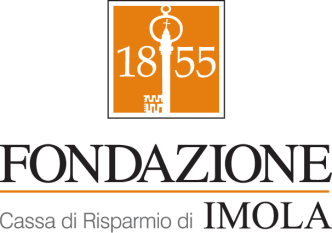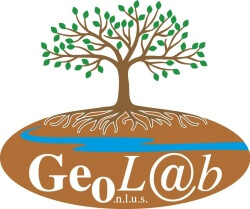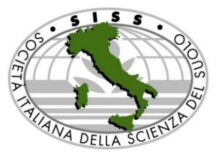Forms of nitrogen in runoff and sediments under a Solanum macrocarpon (L.) Moench farm after urea fertilizer application
DOI:
https://doi.org/10.6092/issn.2281-4485/20387Keywords:
Urea, Runoff, Nitrate nitrogen, Nitrite nitrogen, Ammonium nitrogenAbstract
Runoff from agricultural fields is major of source nitrogen pollution of surface water resources. The impact of the menace on surface water directly emanating from agricultural fields in different agroecologies has not been fully understood. Applying different urea rates, the runoff and sediments generated from Solanum macrocarpon plots after rainfall and irrigation events were analyzed for nitrite-nitrogen, nitrate-nitrogen and ammonium-nitrogen in a one-year study involving two seasons. Significant nitrite-nitrogen, nitrate-nitrogen and ammonium-nitrogen response to the treatments were observed in 17 – 57% of the runoff events, and nitrate-nitrogen of sediments. Runoff NO2–N concentrations from 80 kg N ha-1 (CA) was in many cases higher than values in plots with lower rates. Commonly, runoff’s NO3–N from plots with urea was higher than controls’ in rainforest but within the urea treated plots, the differences were insignificant. In derived savanna about 67% of significant comparison of runoff NO3–N were between control and plots with urea while about 33% were due to differences noticed between 20 – 60 kg N ha-1 (MD 1 – MD 3) and MD 1 - CA. Moreover, NH4–N in runoff increased with urea in both agroecologies. In conclusion, NH4–N in runoff increased with applied urea while the responses of other nitrogen forms were inconsistent. Based on World Health Organization’s (WHO) standard, runoff‘s NO2–N from CA in derived savanna and all treatments in rainforest tended to be harmful to humans if it enters drinking water. However, NO3–N released from the plots seemed not harmful.
References
ABEGUNRIN T.P, AWE G.O., SANGODOYIN A.Y., ONOFUA O.E., OGUNTOYE O.M. (2017) Impacts of Storage Duration and Materials on the Quality of Rainwater in Ogbomoso, Southwest Nigeria. International Journal of Current Microbiology and Applied Sciences 6(7): 4489-4500. https://doi.org/10.20546/ijcmas.2017.607.468
AL-KANANI T., MACKENZIE A. F., BARHAKUR N. N. (1991) Soil water and ammonia volatilization rela-tionships with surface-applied nitrogen fertilizer solutions. Soil Science Society of America Journal 55:1761-1766. http://dx.doi.org/10.2136/sssaj1991.03615995005500060043x
BARROS T., BOSCOV L., BATISTELLA F. PESSÔA DA CRUZB M. FERREIRA M.(2019) Mineral nitrogen fertilization effects on lettuce crop yield and nitrogen leaching. Sci. Hortic., 255:153–160.
https://doi.org/10.1016/j.scienta.2019.05.032
BIJAY- SINGH, ERIC C. (2021) Fertilizers and Nitrate Pollution of surface water: An increasingly pervasive global. Springer Nature Journal of Applied sciences, 3:518. htpps://doi.org/10.1007/s42452 021-04521-8
BØRGESEN C., PULLENS J., ZHAO J.,BLICHER-MATHIESEN G., SØRENSEN P. OLESEN J. (2022) An empirical model for estimating nitrate leaching from the root zone of agricultural land. European Journal of Agronomy 134 :126465. https://doi.org/10.1016/j.eja.2022.126465
BRENTRUP F., KÜSTERS J., KUHLMANN H., LAMMEL J. (2001). Application of the life cycle assessment methodology to agricultural production: An example of sugar beet production with different forms of nitrogen fertilizers. European Journal of Agronomy, 14:221–233. DOI: 10.1016/S1161-0301(00)00098-8
BREWER P.G., RILEY J.P. (1965) The automatic deter-mination of nitrate in sea water: Deep Sea Research 12:765-772. https://doi.org/10.1016/0011-7471(65)90797-7
DIAS J. (2012). Nutritional quality and health benefits of vegetables: A Review. Food and Nutrition Sciences, 10(3): 1354-1374. https://doi.org/10.4236/fns.2012.310179
EASTON Z.M., PETROVIC, A.M. (2004) Fertilizer source effect on ground and surface water quality in drainage from turfgrass. Journal of Environmental Quality 33:645-655. https://doi.org/10.2134/jeq2004.6450
ERNST J.W., MASSEY H.F. (1960) The effects of several factors on volatilization of ammonia formed from urea in the soil. Soil Science Society of America Proceedings 24:87-90. https://doi./10.2136/sssaj1960.03615995002400020007
ESPEJO-HERRERA N., GRÀCIA-LAVEDAN E., BOL-DO E., ARAGONÉS N., PÉREZ-GÓMEZ B., POLLÁN M., MOLINA A.J., FERNÁNDEZ T., MARTÍN V., LA VECCHIA C. (2016) Colorectal cancer risk and nitrate exposure through drinking water and diet. International Journal of Cancer, 139:334–346. doi:10.1002/ijc.30083.
FANG Q.X., MALONE R.W., MA L., JAYNES D.B., GREEN T.R., AHUJA L.R. (2012) Modeling controlled tile flow, nitrogen application rate, and weather effects on nitrogen loss to streams. Agricultural Water Management 103:150–161. https://doi.org/10.1016/j.agwat.2011.11.006
FOOD AND AGRICULTURAL ORGANIZATION CORPORATE DATABASE. (2020) Free Database for Food and Agricultural Organization of the United Nations, FAOSTAT. https://www.faoatat.org.
FISCHER G., WINIWARTER W., ERMOLIEVA T., CAO G.Y., QUI H., KLIMONT Z. WIBERG D., WAGNER F. (2010). Integrating Modelling framework for assessment and mitigation of nitrogen pollution from agriculture: Concept and case study for China. Agriculture, Ecosystems and Environment 136, 116–124. DOI: 10.1016/J.AGEE.2009.12.004
GALLOWAY J.N., ABER J.D. ERISMAN J. W., SEIZINGER S.P., HOWARTH, R.W., COWLING E.B. COSBY, B.J. (2003). The nitrogen cascade. BioScience 53, 341-356. https://doi.org/10.1641/0006-3568(2003)053[0341:TNC]2.0.CO;2
GOOLSBY D.A., BATTAGLIN W.A. (2000). Nitrogen in the Mississippi basin estimating sources and flux to the Gulf of Mexico. USGS Fact Sheet 135-00, https://ks.water.usgs.gov/Kansas/pubs/fact-sheets/fs.35-00.pdf
HORGAN B.P., BRANHAM B.E. AND MULVANEY R. L. (2002). Mass balance of 15N applied to Kentucky bluegrass including direct measurement of denitrification. Crop Sciences, 1595. https://doi.org/10.2135
HOUBA V.J.G., TEMMINGHOFF E.J.M., GAIKHORST G.A., VAN VARK W. (2000). Soil analysis procedure using 0.01M Calcium Chloride as extracting agent. Communications in Soil Science and Plant Analysis 31 (9-10), 1299-1396. http://dx.doi.org/10.1080/00103620009370514
HUANG Y., ZHANG Z., LI, Z., DAI D., LI Y.(2022). Evaluation of water use efficiency and optimal irrigation quantity of spring maize in Hetao Irrigation District using the Noah-MP Land Surface Model. Agricultural Water Management, 264 .https://doi.org/10.1016/j.agwat.2022.107498.
IQBAL T. (2006). Study on vertical and lateral leaching of nitrate from a wheat om a wheat field in China. Turkish Journal of Agriculture and Forestry30:59-65.
JABBAR F. K, GROTE K. (2019). Statistical assessment of nonpoint source pollution in agricultural watersheds in the Lower Grand River watershed, MO, USA. Environmental Science Pollution Research 26, 1487–1506. https://link.springer.com/article/10.1007/s11356-018-3682-7
JONES C., BROWN B. D., ENGEL R., HORNECK D., OLSON-RUTZ K. (2013). Factors affecting nitrogen fertilizer volatilization. Montanna State University Extension Bulletin 2013, 1-6.
KELLER G.D., D. B. MENGEL. (1986). Ammonia volatilization from nitrogen fertilizers surface applied to no-till corn. Soil Science Society of America Journal. 50, 1060-1063.
LI X.S. WU B.F., ZHANG L. (2013) Dynamic monitoring of soil erosion for upper stream of Miyun reservoir in the last 30 years. Journal of Institution of Water and Environmental Management 5, 460-465.
LIU J., YOU, L., AMINI M., OBERSTEINER M., HERRERO M., ZEHNDER A.J.B. YANG H. (2010) A resolution assessment of global nitrogen flows in cropland. Proceedings of National Academy of Science, USA 107:8035-8040. https://doi.org/10.1073/pnas.0913658107
LIU Y., JIANG D.S., LI Y.J., ZHANG, R.F., LI, M. CUI, Y.B. (2014) Influence of environmental factors on the acute toxicity of ammonia to corbicula fluminea and limnodrilus hoffmeisteri. Research Environmental Sciences 27(9), 1067-1073.doi:10.13198/j.issn.1001.6929.2014.09.16
LONGNECKER M.P. DANIELS J. L. (2001) Environmental contaminants as etiologic factors for diabetes. Environmental Health Perspectives 109, 871-876. https://doi.org/10.1289/ehp.01109s6871
MA B., GUAN R., LIU L., HUANG Z., QI S., XI Z., ZHAO Y., SONG S. YANG H. (2021) Nitrogen loss in vegetable field under the simulated rainfall experiments in Hebei China. Water 13:552.
https://doi.org/ 10.3390/w13040552
MACLEAN, A.A. MCRAE, K.B. (1987). Rate of hydrolysis and nitrification of urea and implication of its use in potato production. Canadian Journal of Soil Science 67, 679-686. https://doi.org/10.4141/cjss87-064
MCSWINEY, C. P., ROBERTSON, G. P. (2005). Nonlinear response of N2O flux to incremental fertilizer addition in a continuous maize (Zea mays L.) cropping system. Global Change Biology 11, 1712–1719. doi: 10.1111/j.1365-2486.2005.01040.x
MIAO C. Y., YANG L. CHEN X. H. (2012). The vegetation cover dynamics (1982-2006) in different erosion regions of the Yellow River basin, China. Land Degradation and Development 23: 62-71. http://dx.doi.org/10.1002/ldr.1050
MINISTRY OF ENVIRONMENT AND FOOD OF DENMARK MINISTERIAL ORDER ON WATER QUALITY AND MONITORING OF WATER SUPPLY PLANTS. Water Supply Act Number 125of 2017.1978-06-08 (accessed on 12 May 2017). https://doi.org/10.34194/geusb.v49.8319
MITCHELL C., BRODIE J., WHITE I. (2005). Sediments, nutrients and pesticide residues in event flow conditions in streams of the Mackay Whitsunday Region, Australia. Marine Pollution Bulletin 51, 23–36. https://doi.org/10.1016/j.marpolbul.2004.10.036
MOTASIM A.M., SAMSURI A.W., ABDULSUKOR A. S., ADIBAH A.M. (2021). Nitrogen dynamics in tropical soils treated with liquid and granular urea fertilizers. Agriculture,
, 546. https://doi.org/ 0.3390/agriculture11060546
OKOYA A. A., OSUNGBEMIRO B. W., OLOGUNORISA, T. E. (2017). Spatial and Temporal Variation of Rainwater Chemistry in Ile-Ife and Its Environ, Osun State, Nigeria. Journal of Sustainable Development 10 (2). https://doi.org/10.5539/jsd.v10n2p203
OLASOJI H.O., OJETADE J.O., MUDA S.A. AMUSAN A.A. (2022). Characterisation, classification and suitability assessment of soils formed in granite and gneiss in humid area of southwestern Nigeria for cacao (Theobroma cacao) production. Tropical Agriculture 99, 11 – 26. ISSN (Print): 0041-3216
OLSON K.R., AL-KAISI M., LAL R., CIHACEK L. (2016). Impact of soil erosion on soil carbon stocks. Journal of Soil and Water Conservation 71(3): 62A-67A. https://doi.org/10.2489/jswc.71.3.61A
STATE GOVERNMENT (2012). Waste to wealth. Ondo State Waste Management Bulletin on the use of Organic Fertilizer and Organomineral Fertilizer, Ondo State, Nigeria, pp: 10.
POWERS S.E. (2007). Nutrients loads to surface water from row crop production. International Journal of Life Cycle Assessment 12(6), 399-407. http://dx.doi.org/10.1007/s11367-007-0307-7
RUIMIN L., PEIPEI Z., XIUJUAN W., YAXIN C. ZHENYAO S. (2013). Assessment of effects ofbest management practices on agricultural non-point source pollution in Xiangxi River watershed. Agricultural Water Management 117, 9–18. DOI: 10.1016/j.agwat.2012.10.018
SADEGHPOUR A., HASHEMI M., WEIS S.A., SPARGO, J.T., MEHRVARZ S., HERBERT S.J. (2015). Assessing tillage systems for reducing ammonia volatilization from spring-applied slurry manure. Communication in Soil Science and Plant Analysis 46, 724–735. https://doi.org/10.1080/00103624.2015.1005223
SHETTY P., ACHARYA C. VEERESH N. (2019). Effect of urea fertilizer on the biochemical characteristics of soil. International Journal of Applied Sciences and Biotechnology 7 (4), 414-420. http://dx.doi.org/10.3126/ijasbt.v7i4.26778
SOIL SURVEY STAFF (2014). Keys to soil taxonomy. 12th ed. USDA Natural Resources Conservation Service.
SMITH, D. R., KING K. W., JOHNSON L., FRANCESCONI W., RICHARD P., BAKER D., SHARPLEY A.N. (2015). Surface runoff and tile drainage transport of phosphorus in mid- western United States. Journal of Environmental Quality 44, 495- 502. https://doi.org/10.2134/jeq2014.04.0176
STARK C. RICHARDS K. (2008). The continuing challenge of agricultural nitrogen loss to the environment in the context of global climate change and advancing research. Dynamic Soil, Dynamic Plant 2(1), 1-12.
UNITED STATES ENVIRONMENTAL PROTECTION AGENCY, USEPA, (2003) Introduction to the clean water act. Online at http://www.epa.go/watertrain/cwa/
VILLANUEVA C.M., KOGEVINAS M., CORDIER S., TEMPLETON M.R., VERMEULEN R., NUCKOLS J.R., NIEUWENHUIJSEN M.J., LEVALLOIS P. (2014) As-sessing exposure and health consequences of chemicals in drinking water: Current State of Knowledge and Research Needs. Review. Environental Health Perspectives 122, 213–221. https://doi.org/10.1289/ehp.1206229
WALLMAN M DELIN S (2022). Nitrogen leaching from tile – drained fields and lysemeters receiving rates and sources of nitrogen. Soil Use and management 38(1):596 – 610. https://doi.org/10.1111/sum.12724
WORLD HEALTH ORGANIZATION (2017). Guidelines for drinking water quality (4th ed. incorporating first addendum),WHO. http://www.who.int/water_sanitation_health/publications/dwq-guidelines-4/en. ISBN: 978-92-4-154995-0
WORLD HEALTH ORGANIZATION (2011). Guidelines for drinking water quality (4th ed. pp. 398-403), WHO. ISBN: 9789241548151
XIA Y., ZHANG M., TSANG D. C. W., GENG N., LU D., ZHU L., IGALAVITHANA A. D., DISSANAYAKE P. D., RINKLEBE J., YANG X., YONG S. O. (2020) Recent advances in¬ control technologies for ¬non-point source pollution with ¬nitrogen and ¬phosphorous from agricultural runoff: current practices and¬ future prospects. Applied Biological Chemistry 63:8. https://doi.org/10.1186/s13765-020-0493-6
ZHANG T.Q., TAN C.S., ZHENG Z.M., DRURY C.F. (2015) Tile drainage phosphorus loss With long-term consistent cropping systems and fertilization. Journal of Environmental Quality 44, 503 – 511. DOI: 10.2134/jeq2014.04.0188
ZHAO X., ZHOU Y., MIN J., WANG, S, SHI W.,XING G. (2012) Nitrogen runoff dominates water nitrogen pollution from rice-wheat rotation in the Taihu Lake region of China. Agriculture, Ecosystems and Environment 156:1–11. http://dx.doi.org/10.1016/j.agee.2012.04.024
Downloads
Published
How to Cite
Issue
Section
License
Copyright (c) 2025 F. Thomas Akinwumi, D. Joseph Oyedele, F. Oladapo Tijani

This work is licensed under a Creative Commons Attribution 4.0 International License.









